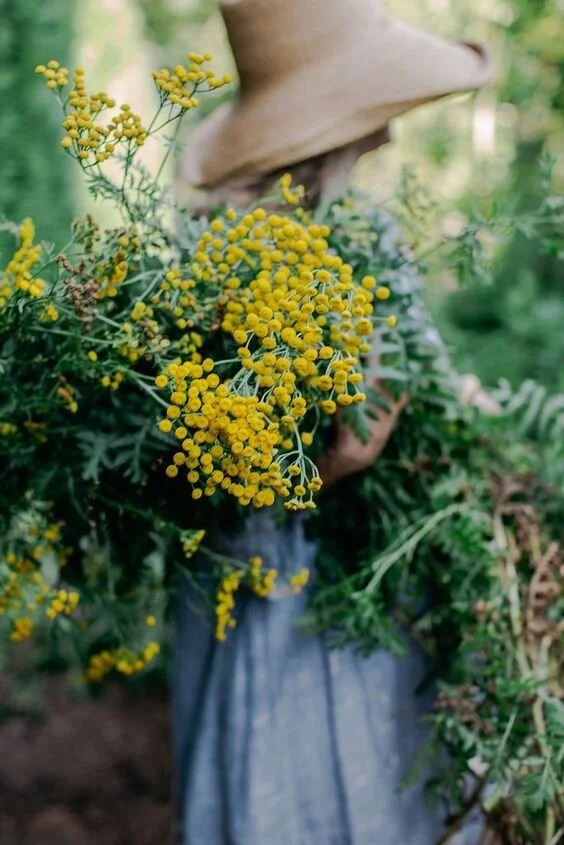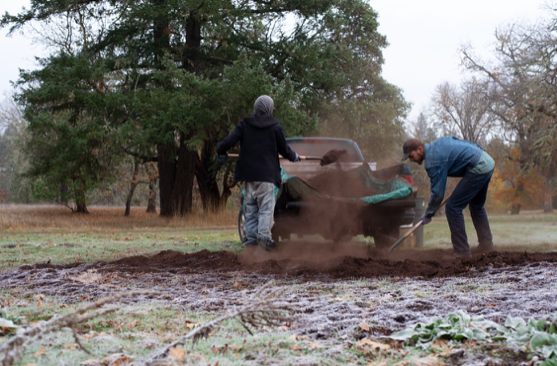How to Start Your Own Herb Garden
Written by Lina Watanabe, Herbalist at Herb Pharm. Herb Pharm makes high-quality liquid herbal products for the whole family. Founded in 1979, their products are made of plants and ethical choices, so they’re kind to both the body and the Earth.
Starting an herb garden can be a rewarding project. It is a great way to familiarize yourself with the herbs that can grow in your area. In your own garden, you also have better control over how your herbs are grown; you can choose to use organic methods, and you will be able to harvest and use them at their peak.
You’ll also connect with the plants on a personal level, whether you start them from seeds or begin with fully mature plants. You might find that caring for your plant “babies” and watching them flourish is quite fulfilling. Plus, it’s so satisfying to make herbal preparations from homegrown plants picked straight from the garden. Gardening is a hobby that’s also great for your mental and even your physical health.
You can use existing flower beds to grow herbs, or, if you prefer a fresh start or like keeping your herbs and flowers separate, consider building some raised beds. If you live in an apartment or don’t have yard space, try growing a few herbs in containers or pots on your deck or balcony. You can also look into getting a plot at a local community garden. You pay a small fee based on your plot size, and it is yours for the growing season. You get the benefits of being part of a community, and many offer gardening and composting classes to help you get started.
Here’s some more helpful info for new gardeners . . .
Choose the right gardening tools
Having the right tool is crucial in the garden. It can make your life a lot easier and help you ensure success. Make sure to clean your tools regularly to avoid cross contamination (in case any of your plants happen to become diseased).
These tools will be handy for container gardens or small spaces:
Containers with saucers (for catching water).
Soil: Depending on your space, you will need a combination of organic potting soil, compost and/or mulch (more info on those below).
Hand tools: If you don’t have one already, consider buying a gardening tool set. It should include regular and transplanting trowels, a three-prong cultivator (to loosen soil and make weeding a breeze) and a weeder (to loosen and dig up weeds).
Pruning shears are helpful for woody plants like Rosemary or Hydrangea. Choose “ratcheting” anvil pruners for dead stems or branches and bypass pruners for live plants. (The ratcheting mechanism is a blessing for those with smaller hands or when some extra “oomph” is needed for cutting through thick branches.)
Garden scissors are essential and versatile. Use them when you harvest, as you can damage plants if you try to tear them.
Watering tools: You’ll need a hose with an adjustable sprayer or watering wand. A watering can is fine for containers or smaller areas. An irrigation system with drip or soaker hoses is helpful for larger beds and continuous spaces (like a lawn).
Gloves: Even though you may prefer to put your hands directly in the soil (this encourages the good-for-you microorganisms in the soil to get on your skin!), some jobs may need an extra layer of protection. Sturdy gloves will come in handy when you’re shoveling or harvesting prickly plants like Stinging Nettles.
For larger gardens, you’ll want some additional tools, including:
A shovel for heavy-duty digging.
A spade for edging or moving established plants.
A digging fork to mix up or loosen deeper soil and harvest roots.
A leaf rake to clear fallen debris and/or a garden rake to break down the soil surface.
A hoe to make shallow trenches for planting seeds or removing weeds, spent plants or root harvests.
A wheelbarrow: Let me tell you, transferring compost even a short distance is not fun without a wheelbarrow. It is highly recommended for larger gardens!
How to keep your soil healthy
Make sure you prep your soil and keep it healthy to keep your plants healthy. It may sound time-consuming, but good soil management will save time in the long run — so your plants will be happier and be more productive.
Healthy soil:
is free from toxins like pesticides and heavy metals.
prevents erosion.
resists adverse weather like droughts.
balances nutrients.
reduces pests and plant diseases.
contains and supports diverse microbes.
maintains a proper pH (is not too acidic or alkaline).
has good drainage.
stays fertile.
has deep topsoil.
Compost and mulch can both boost soil health. Compost helps condition the soil. It allows for better drainage and air retention, and it adds nutrients and enhances microorganisms. Compost also deters pests and diseases. Mulch can inhibit weed growth, while helping retain and regulate both moisture and temperature during the sleepy winter months. It also adds organic matter to the soil as it breaks down.
Your soil-maintenance routine will vary depending on where you live and what you’re growing. Start with these basics.
In larger spaces, boost organic matter levels in the soil by adding compost and mulch or by planting cover crops in the fall or spring.
With compost, a good rule of thumb is to add a ½ inch to 3 inches every year (if you live in northern climates like the Pacific Northwest). If you live in warmer or Southern climates, amend with compost twice a year. (If you are starting with all-new potting soil or compost, skip this step for now.)
When your harvests are complete in late fall or early winter, put your beds “to rest.” Remove all waning annuals (plants that only live for one growing season) or till them under. Trim back your plants as needed, then add a thick layer of mulch and a few layers of cardboard or burlap to empty beds.
If you’re letting plants “overwinter” (stay in your garden until spring), cover the bed and their roots with mulch to keep them warm.
You don’t need to buy mulch — you can use lawn clippings, bark chips, fall leaves, hay or straw, shredded newspaper, evergreen needles, sawdust or anything similar that will organically break down in a short amount of time.
Cover cropping can give an extra boost to your soil, and this practice is especially helpful if your soil quality is either poor or unknown. Cover crops reduce erosion by keeping the soil covered during times when other crops (like your herbs) aren’t growing. When they are mature, the cover crops are tilled into the soil to create more biomass and add organic matter. Some herbs — such as Oats, Alfalfa and Red Clover — are commonly used as cover crops and you can harvest them! Keep in mind that cover cropping means you will lose a growing season and will then start planting your herbs the following spring or fall.
Rotating your annual plants every year is another way to help your soil. This simply means don’t plant the same things in the same places two years in a row. Crop rotation improves the health of the plants by reducing pests, managing weeds and even balancing the soil nutrients, making your plants more resilient!
If you have a container garden, consider these tips as well:
Replace the soil in any potted plant if you notice the soil is hard or if the plant wilts a day or so after watering, has discolored leaves or no new growth. (Plants take nutrients from the soil into their roots, so the soil can get depleted — and fresh, new soil is the fix.)
Be sure your container/pot has at least one hole at the bottom to ensure adequate drainage. Most plants can’t thrive when sitting in stagnant water.
If a plant’s roots are coming through the bottom drainage hole, you’ll need to rehome your plant in a larger container. To minimize the stress of the move, water the plant at least one day before repotting. (This is best done in the spring and summer, when plants are actively growing.)
While you can definitely “get into the weeds” when it comes to starting a garden, keep it simple and use these tips as your own love of growing herbs takes root.
Now you’re ready to pick your favorite herbs and start growing them! As you plan your garden, consider adding native pollinator-friendly plants that are specific to your area to help animals and insects like birds, bees, butterflies, moths, flies and bats. The Pollinator Partnership offers helpful downloadable guides for each bioregion in the United States and Canada. Happy planting — and look out for the next article in this series, which will share my favorite low-maintenance herbs that will grow in most places!
About the Author
Lina Watanabe is an herbalist at Herb Pharm. Herb Pharm makes high-quality liquid herbal products for the whole family. Founded in 1979, their products are made of plants and ethical choices, so they’re kind to both the body and the Earth.





